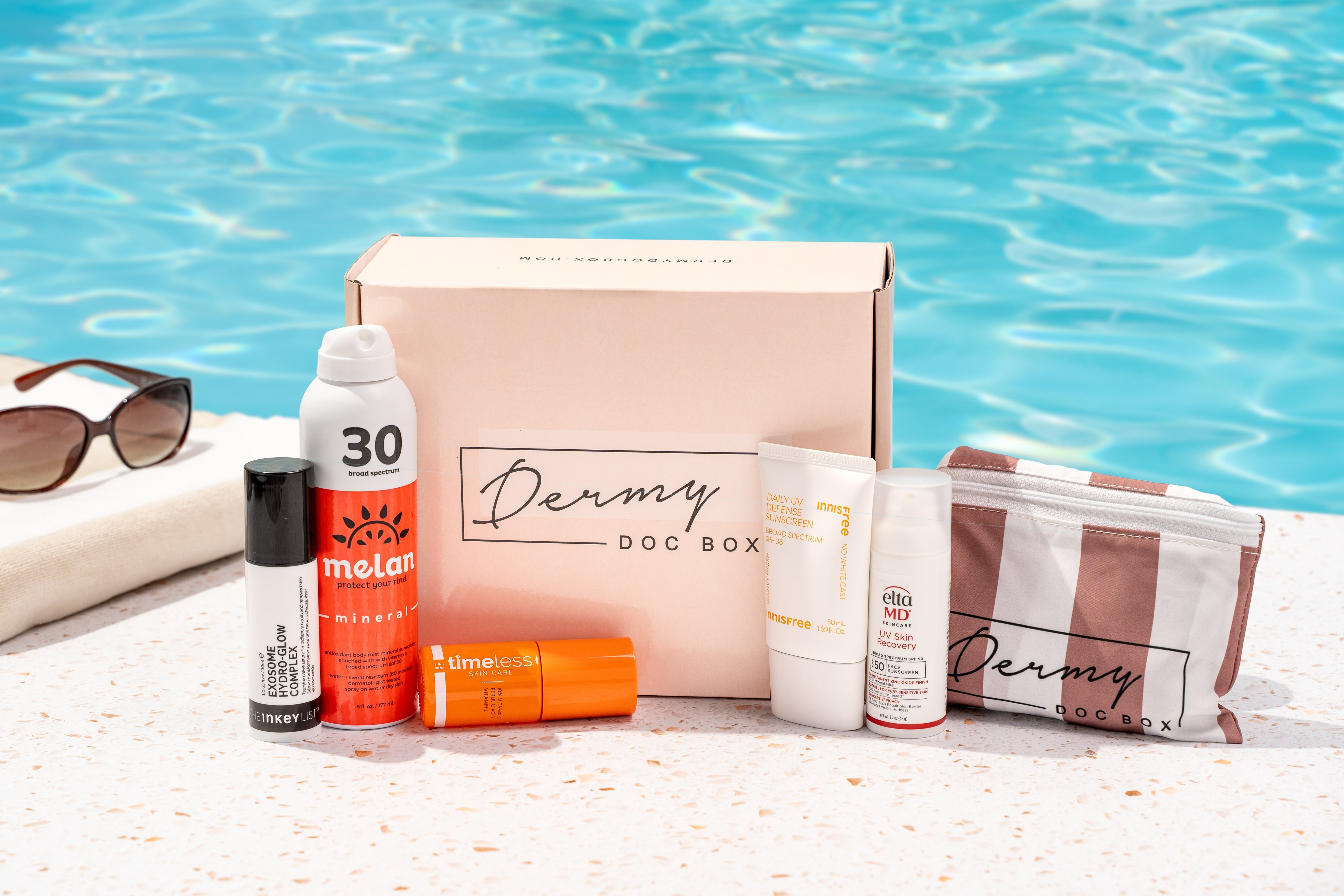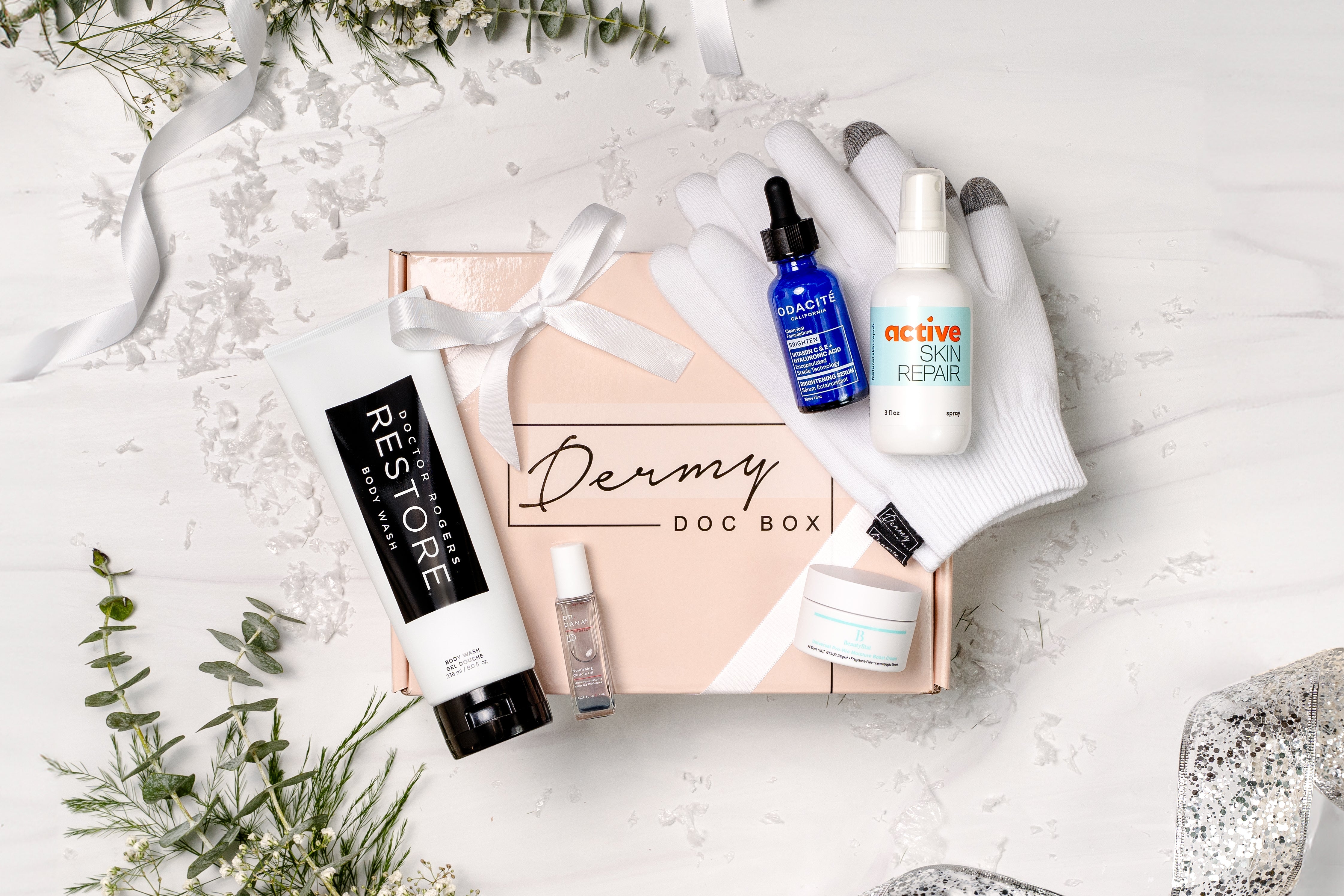Fall is here, and so is exfoliating season. As I’m sure you know, our skin is very sensitive to the environment and conditions around us. When the cold, crisp air starts to arrive in the fall and winter, our skin can become very dry and irritable.
This can lead to layers of dead skin cells, skin pigmentation, and more. And even though we might be storing away our summer clothes, everyone still deserves smooth, clear skin.
So how do you combat this? Exfoliants!
What are exfoliants?
Exfoliants are products that work to help with skin cell turnover. Did you know our skin has a natural exfoliating process? We “shed” the top layer of our skin every 28 days. But as the weather gets cooler, the dry air can stall this process, making the use of exfoliants very helpful to assist with this skin cell turnover! Exfoliating the skin on a regular basis helps to remove dead skin cells, revealing a more radiant complexion. Keep reading for details on all the different types!
Chemical Exfoliators
There are many types of chemical exfoliants (alpha, beta, and poly hydroxy acids) as well as fruit enzymes that work to dissolve dead skin cells.
Alpha Hydroxy Acids (glycolic acid, lactic acid, phytic acid, mandelic acid, etc)
- Alpha hydroxy acids are water-soluble, so they act on the surface of the skin and can be suitable for dry, rough skin and help to brighten and contribute to anti-aging benefits.
Beta Hydroxy Acids (salicylic acid)
- Opposite of alpha hydroxy acids, beta hydroxy acids are more lipid soluble, so they love oil and fats, making them perfect for penetrating deep into pores to help with unclogging pores and improving the appearance of acne. Oily and acne-prone skin types do well with this type of acid.
Polyhydroxy Acids (gluconolactone, galactose, lactobionic acid)
- PHAs are the new kid on the block. Because they are a large molecule, they do not penetrate the skin as deeply and are therefore more suitable for sensitive skin types and have the added benefit of retaining moisture in the skin.
Enzyme Exfoliants (papain from papaya, bromelain from pineapple, Punica granatum from pomegranate, pumpkin extract, etc.).
- Enzyme exfoliants are derived from fruit extracts and work to break down the glue that holds the skin together, leading to lightening and brightening of the skin.
Physical Exfoliators
Physical exfoliants manually remove dead skin cells from the surface of the skin. This includes manual abrasion of the skin with microbeads, scrubs, cleansing brushes, or washcloths. The problem is there are plenty of poorly made scrubs that can actually create micro tears in the skin. Plastic, insoluble microbeads in some physical scrubs can also be harmful to the ocean and animals. Motorized cleansing brushes have also fallen out of favor because they can harbor bacteria and can lead to skin irritation. When looking for a physical scrub, pick one with fine-grained crystals and avoid products with nutshells, fruit pits, and plastic microbeads if possible.
Why you need to exfoliate in the fall
Because our body has a natural exfoliating process that leads to skin cell turnover every 28 days, some people may argue that you don’t need to exfoliate. However, there are several benefits of doing so, especially in the fall!
Most of us will notice as the weather starts to cool down, our skin can start to look a little dull. That’s because our natural exfoliation process tends to slow down with cooler temperatures. Incorporating an exfoliant regularly in your routine can boost this process and keep the skin bright.
Another benefit of fall time exfoliation is that our skin tends to start to show the signs of sun damage from the prior summer season. This can appear in the form of sun spots, dark patches, melasma, and uneven skin tone.
All these pigmentation changes can be improved by incorporating a regular exfoliant in your routine to shed dull, hyperpigmented skin and reveal smoother, brighter, and even skin tones.
Using exfoliants in your fall skincare routine
So you’re ready to use an exfoliant, now the question is, where to start? Don’t worry, that’s what I’m here for! Here are a few ways to do so!
- When it comes to the body, you can find exfoliants in body washes and scrubs. Using exfoliating body scrubs can do much more than shed layers of dead skin cells. With recent research and advancement, there are several body wash options that can help exfoliate your skin while helping with other skin conditions (i.e. acne, eczema, etc.)
- Exfoliating the skin prior to shaving can be helpful in preventing ingrown hairs or bumps but over-exfoliating can contribute to razor burns and dry skin.
- Exfoliants on the face can be found in lots of different products: face washes containing chemical exfoliants, scrubs with physical exfoliants, serums, face masks, and even leave-on moisturizers.
- While retinoids are not truly defined as an exfoliant (retinoids are a Vitamin A derivative), they do share many of the same properties. While they don’t get rid of dead skin cells, they do encourage your skin to turn over at a faster pace and generate healthier skin cells. Similar results, just a different approach as a true exfoliant.
- Exfoliation is only beneficial in moderation. Over-exfoliation can cause irritated, dry skin and even worsen acne. Start exfoliating once a week and increase as tolerated. In general, depending on the intensity of your exfoliant, you may want to avoid daily use. As always, your skin is unique, listen and take cues such as tightness and intense burning as signs you’ve gone too far.
Here are some Dermy Doc Box products we’ve included in past boxes that are exfoliants!
 Revision Brightening Facial Wash (Spring 2021 Box) | Three Ships Lip Exfoliant (Fall 2021 Box) | Defenage 2 Minute Reveal Masque (Fall 2021 Box)
Revision Brightening Facial Wash (Spring 2021 Box) | Three Ships Lip Exfoliant (Fall 2021 Box) | Defenage 2 Minute Reveal Masque (Fall 2021 Box)

Nichole Avonie Exfoliating Body Cleanser (For Mom 2022 Box) | Alpha-H Liquid Gold (For Mom 2022 Box) | Glytone Enhance Brightening Cleansing Powder (Spring 2022 Box)
 BeautyRx Tetrafoliant 8% Peel Solution (Fall 2022 Box) | SLMD Salicylic Acid Body Spray (For Teens 2022 Box) | Topicals Slather Exfoliating Body Serum (Fall 2022 Box)
BeautyRx Tetrafoliant 8% Peel Solution (Fall 2022 Box) | SLMD Salicylic Acid Body Spray (For Teens 2022 Box) | Topicals Slather Exfoliating Body Serum (Fall 2022 Box)
Best exfoliating products for the colder months ahead
Our Fall Box has both a face and body exfoliant that I know you’re going to love!
Slather Exfoliating Body Serum by Topicals is a milky body serum that exfoliates textured skin including keratosis pilaris (rough and bumpy skin on the arms), dry patches, bumps, strawberry skin, and flakiness for soft touch skin. I love this product because it contains all my favorite exfoliating and smoothing ingredients in one formula (lactic acid, urea, glycolic acid, and retinol).
For the face, I’ve chosen to include Beauty Rx Tetrafoliant 8% Peel solution. This dermatologist-developed solution is small but mighty. It packs glycolic acid, salicylic acid, lactic acid, and phytic acid in one solution to exfoliate and improve texture and tone of the skin. Because it combines both alpha and beta hydroxy acids, it makes the perfect combination exfoliant to address all your concerns.
Note to My Readers
Creating an effective skincare routine can be stressful and time-consuming. With the changing of seasons, new products and routines are sometimes necessary.
That's where Dermy Doc Box comes in! As a board-certified dermatologist, I carefully curate boxes for each season so you don't have to stress about it.
Order the Fall 2022 Box today!
Happy Reading!
XOXO,







